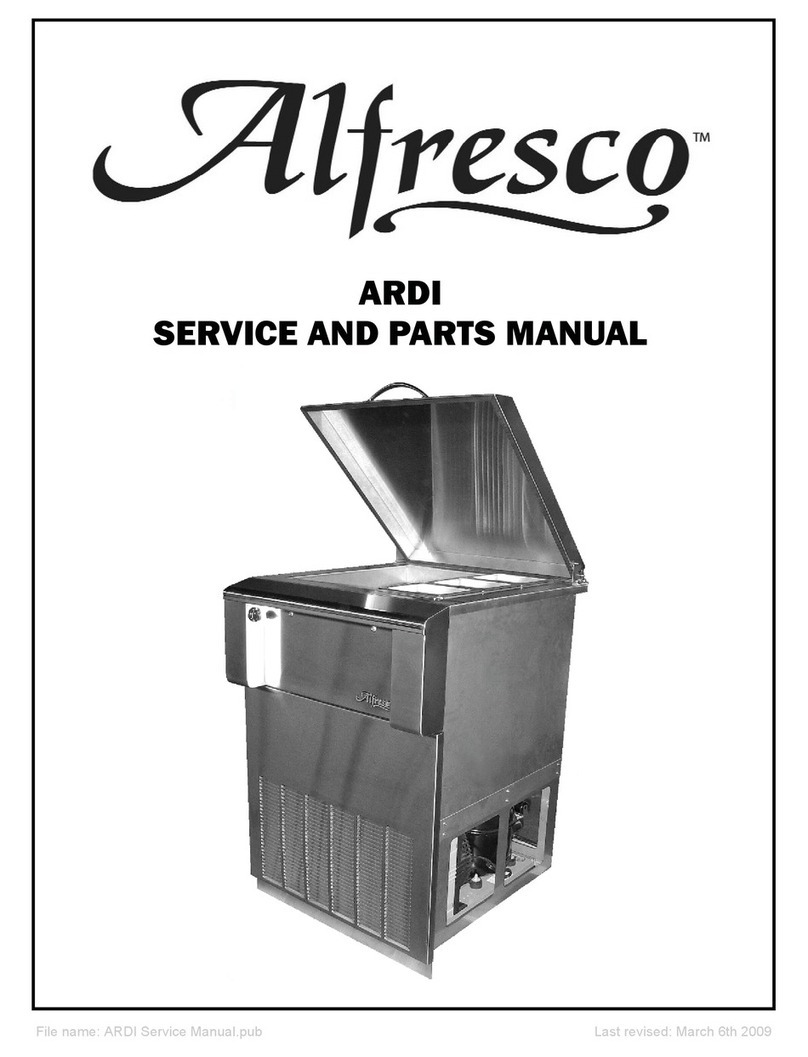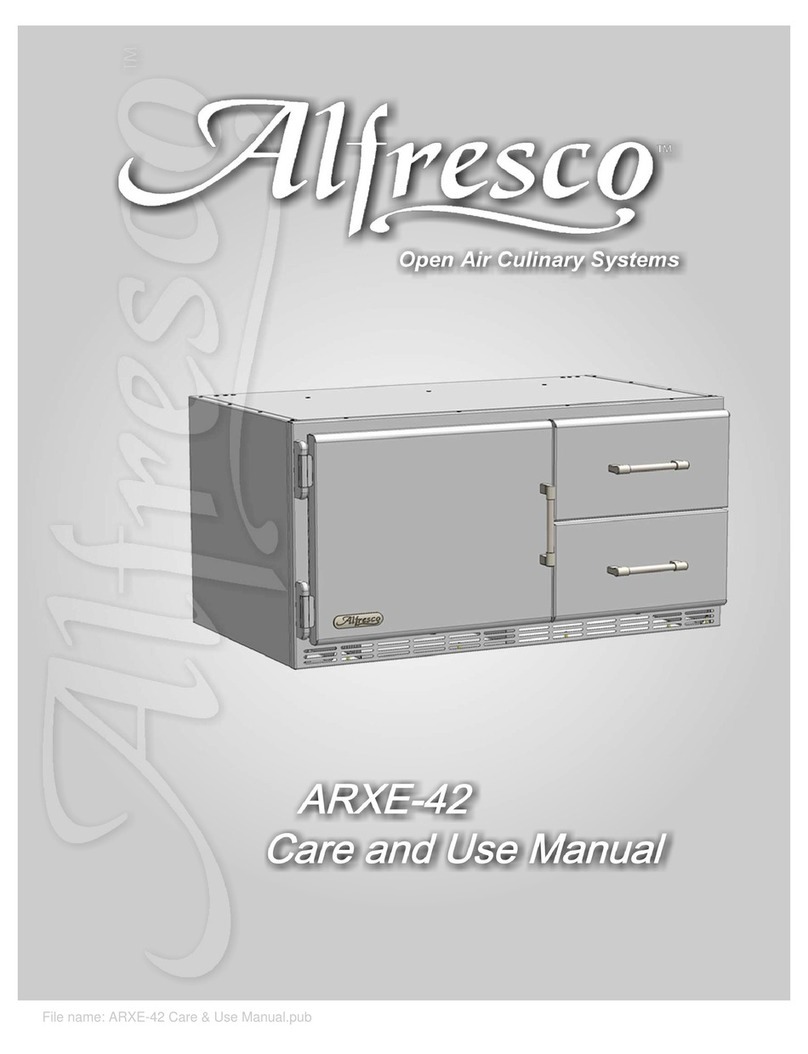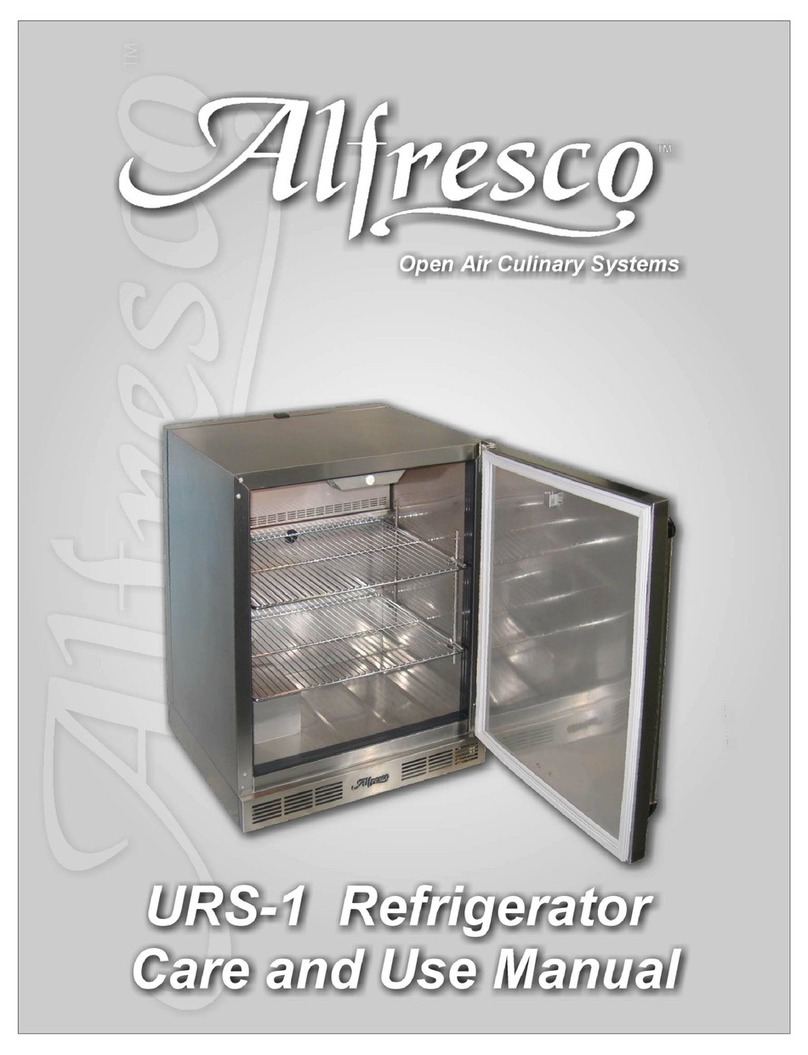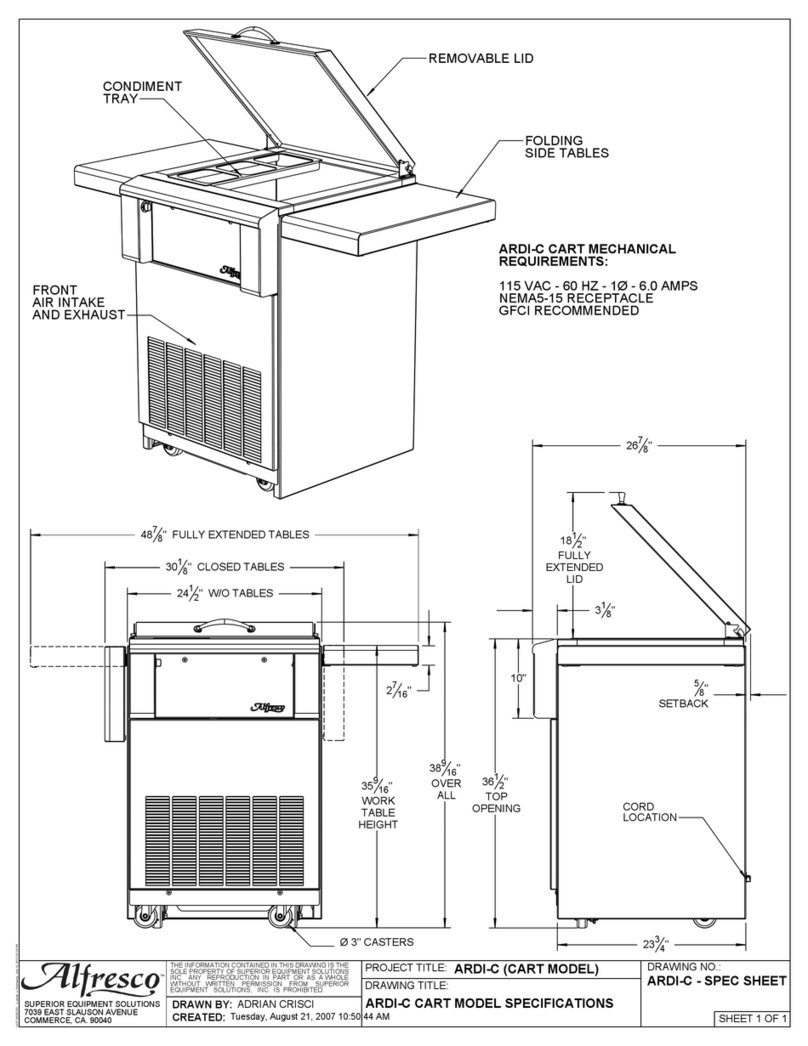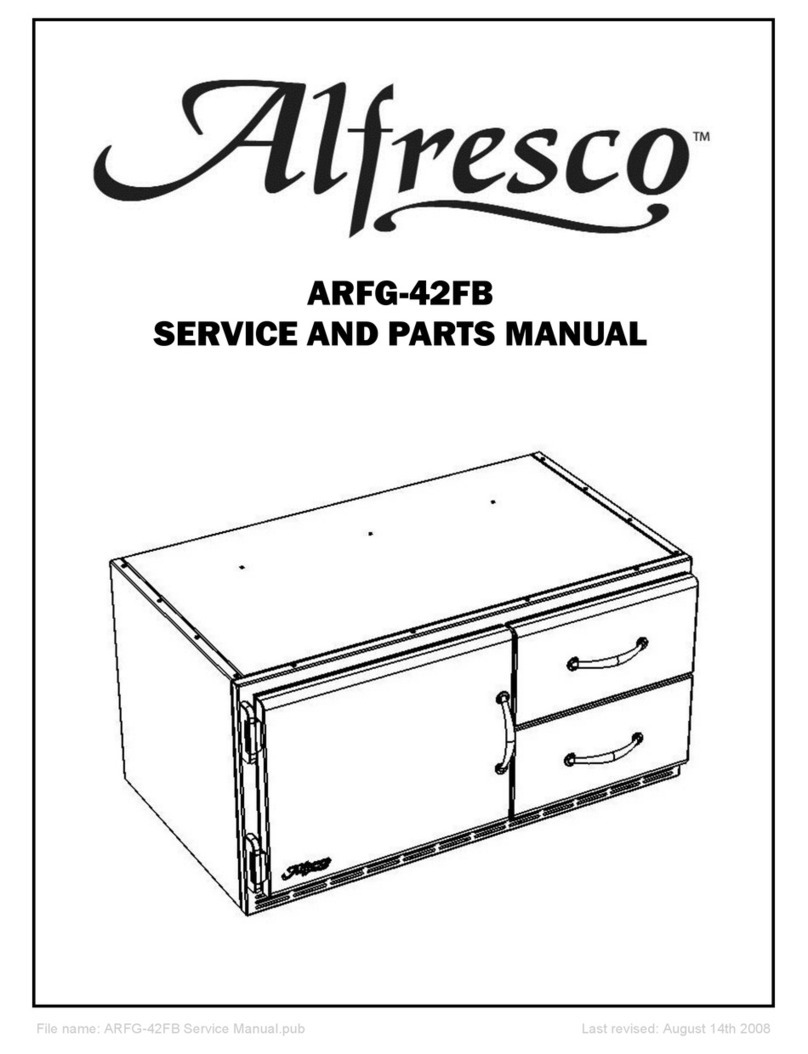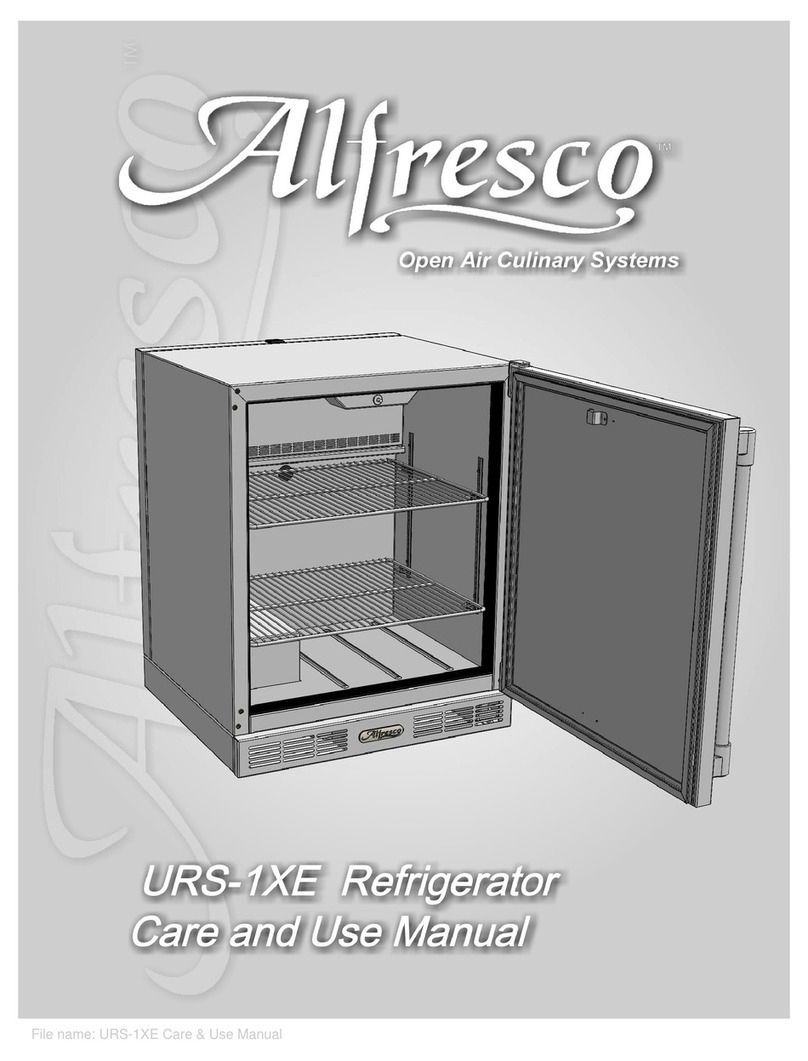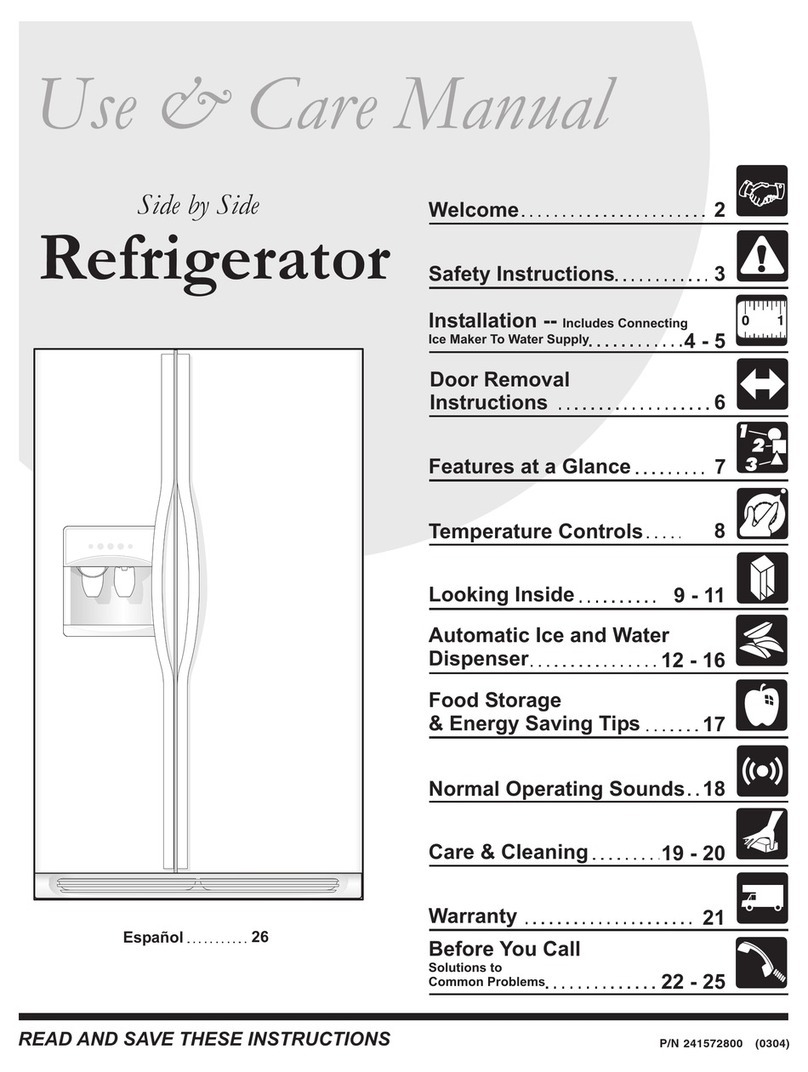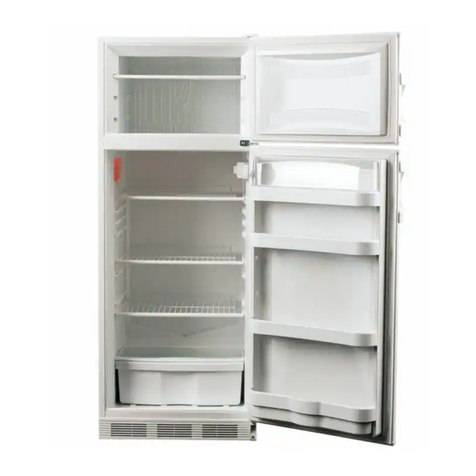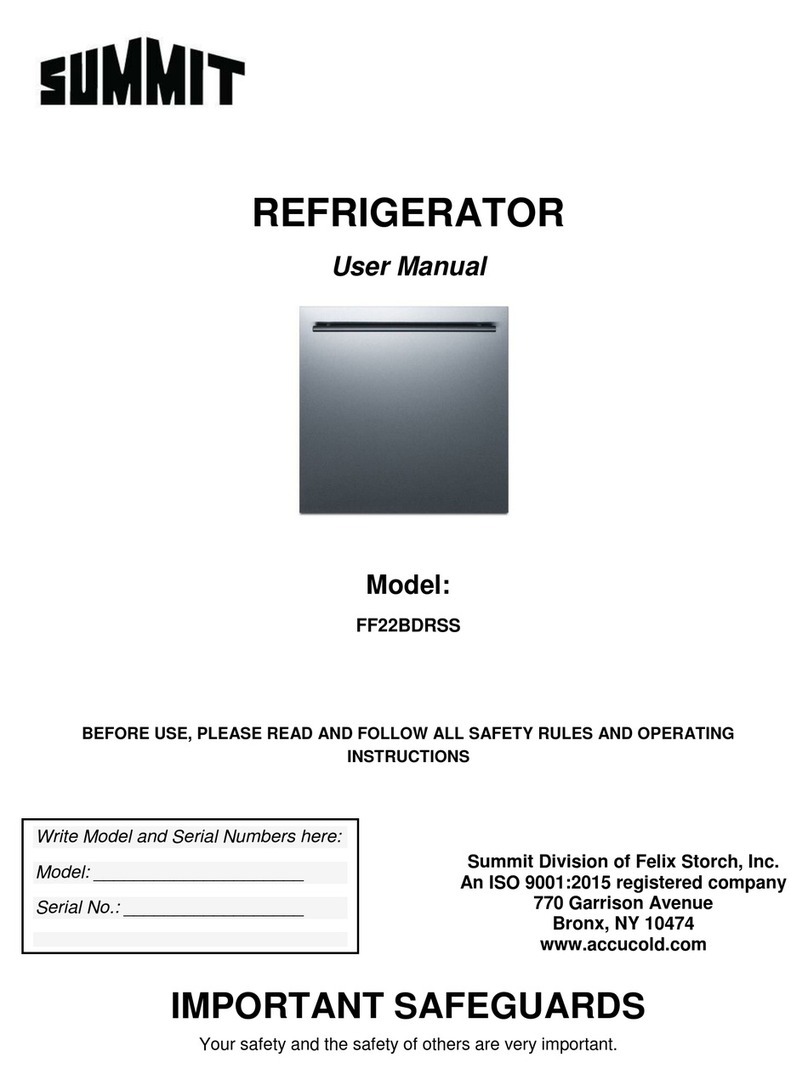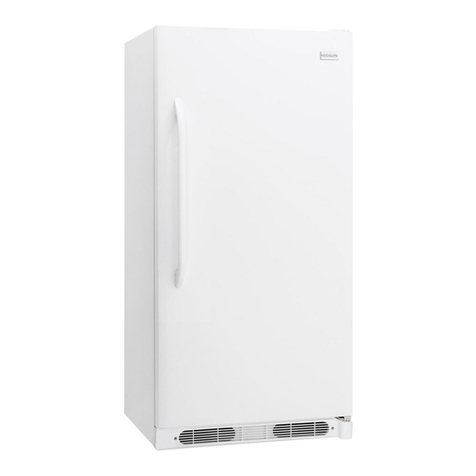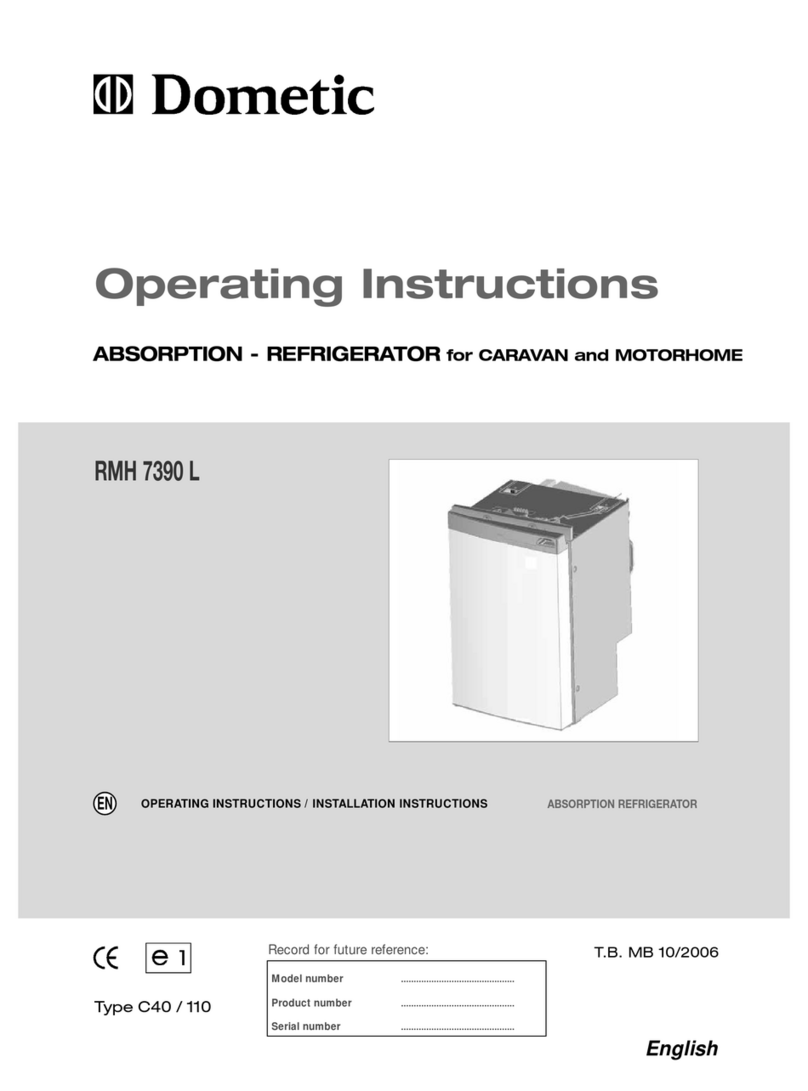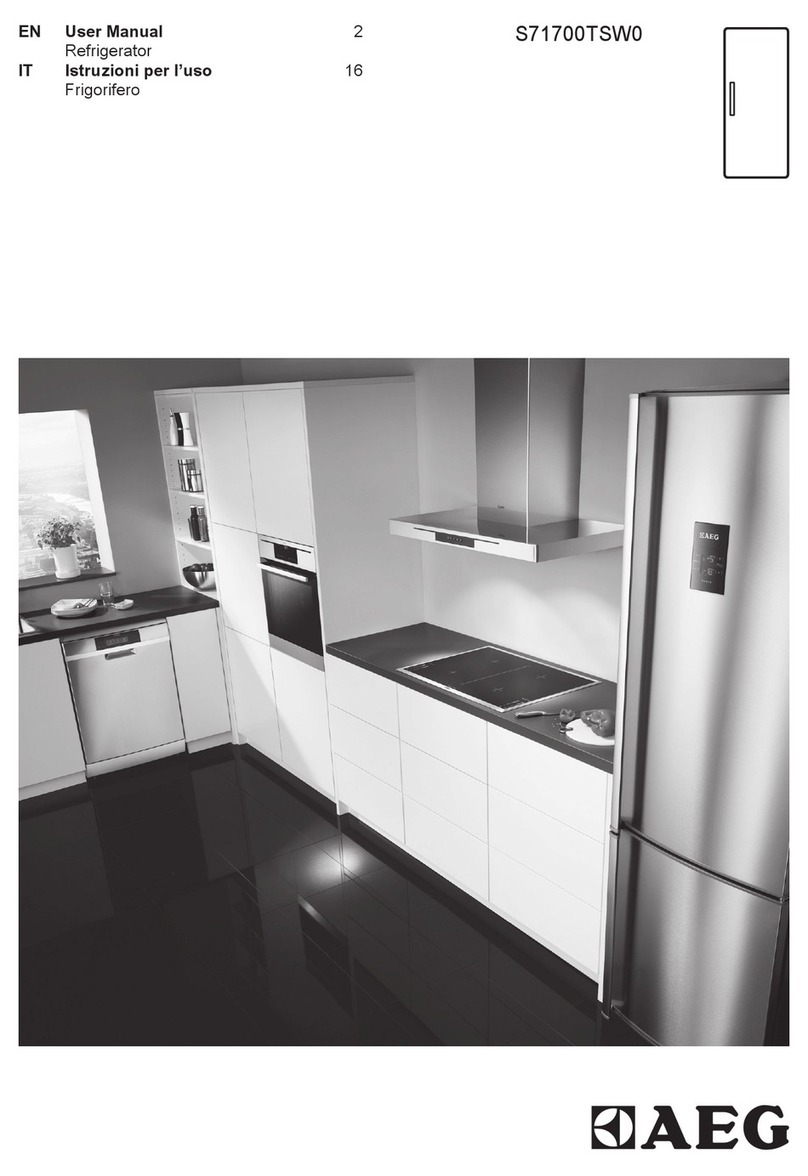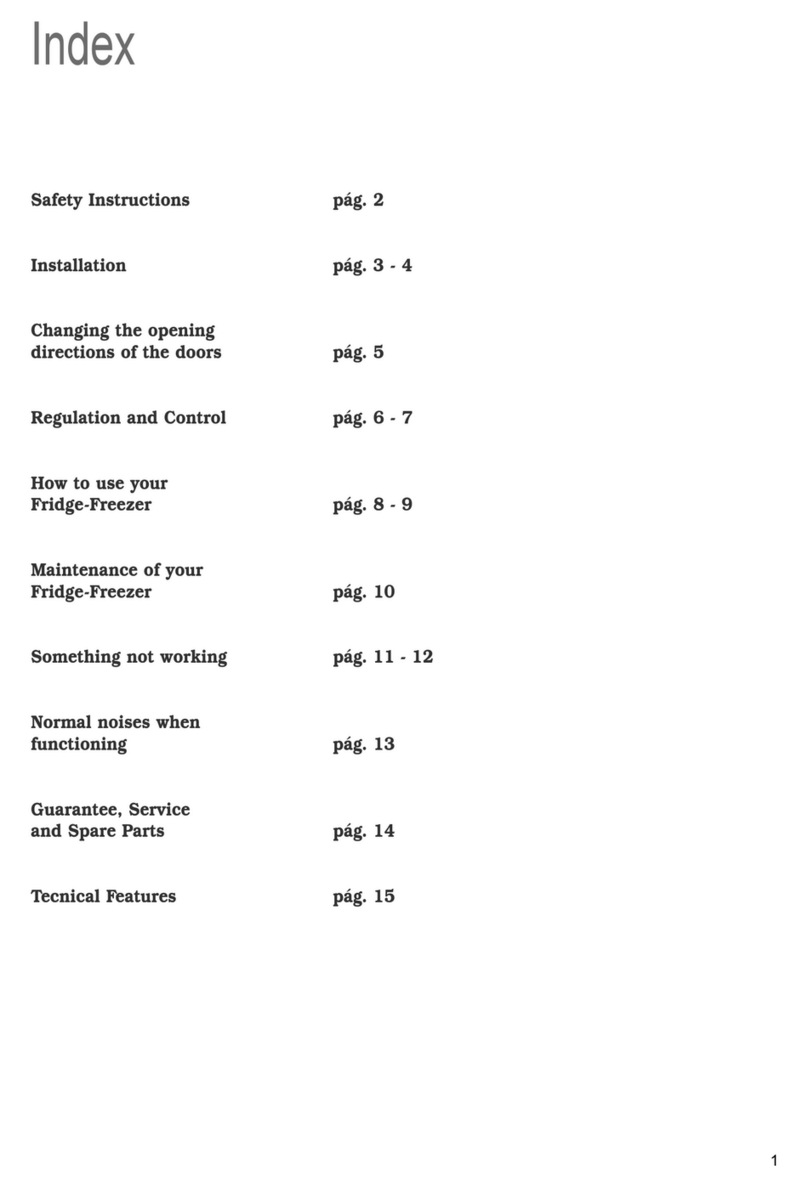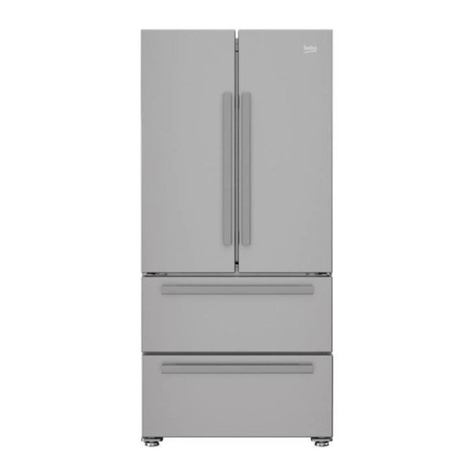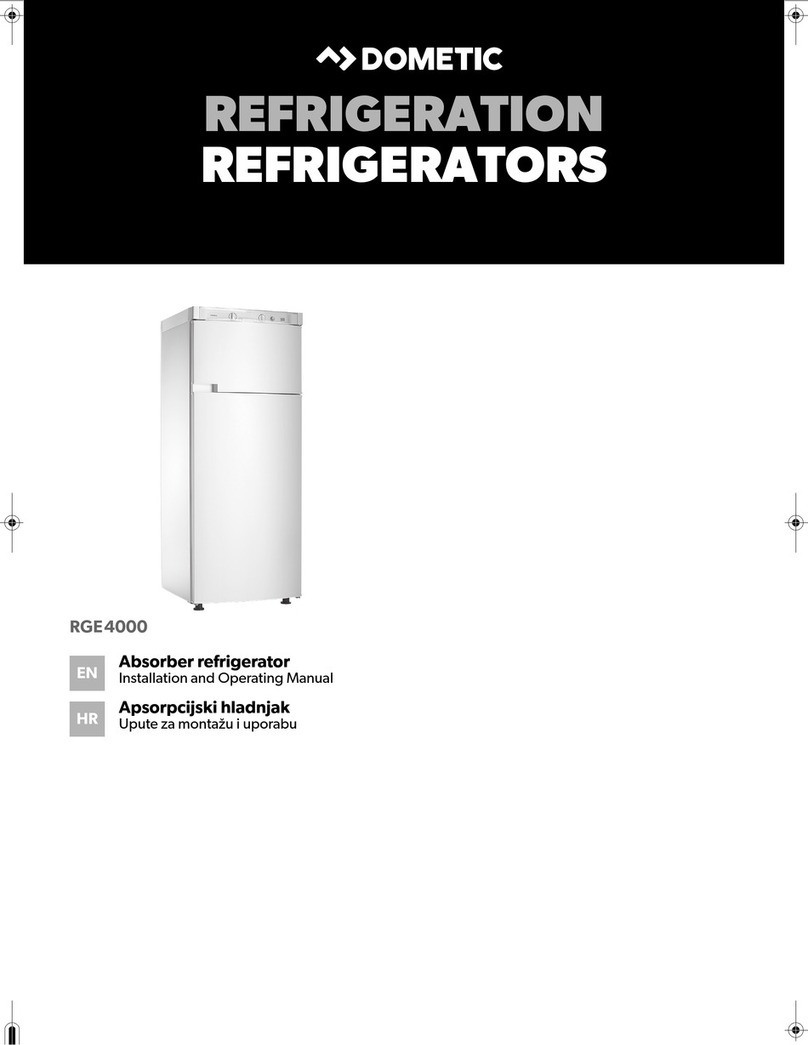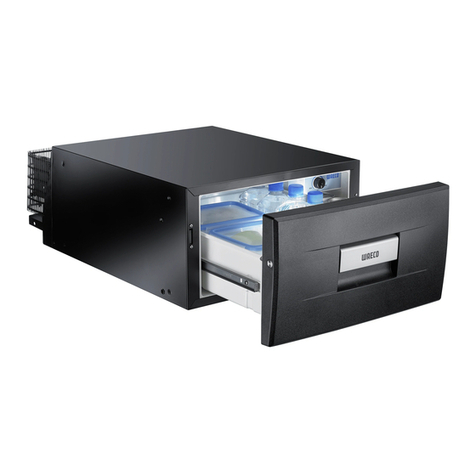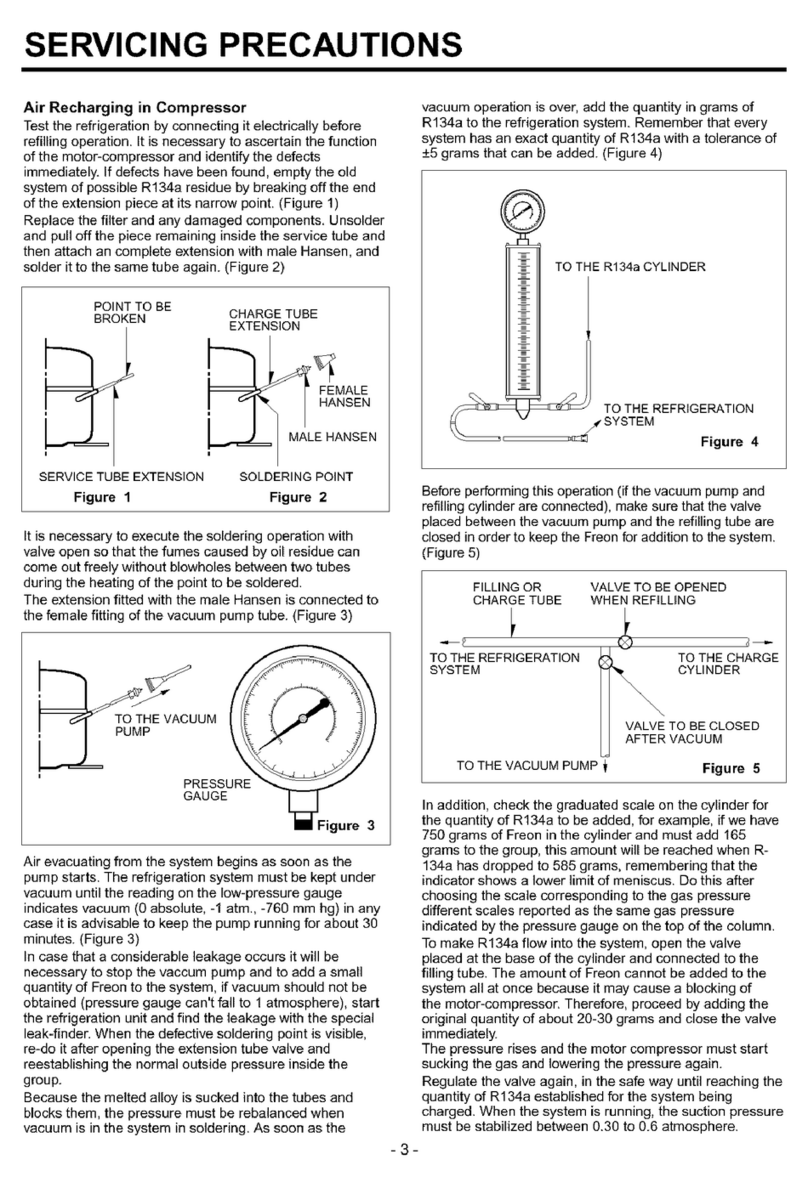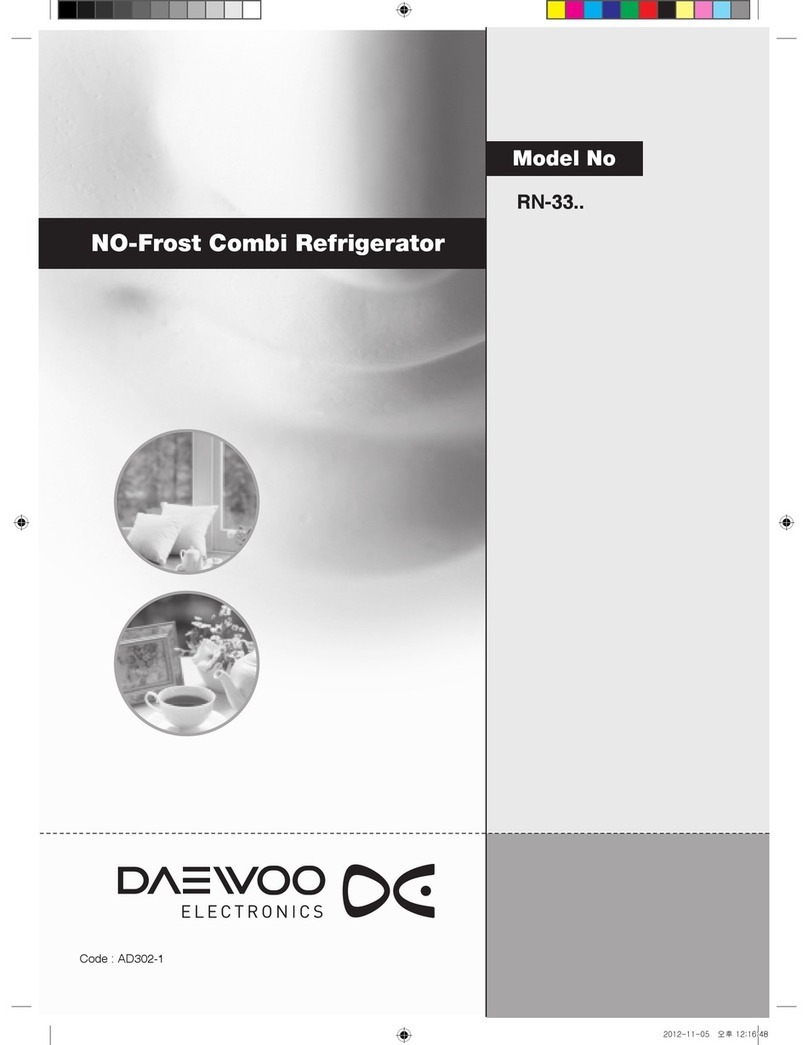
Sporlan™ OMNI-Stat® Controller Settings
◄Values to be changed from default
Model: 952892 - 120 VAC
Code: Parameter: Value Default UOM Access
W/O PS With PS
PASSWORD
PS Password 22 22 #
PROBE PARAMETERS
/c Ambient probe calibration 10 0 °F
/2 Measurement Stability 15 4 ~
/4 Probe to display (0=ambient / 1=product) 0 0 ~
/5 Unit of Measure (0=°C / 1= °F) 1 0 ~
REGULATION PARAMETERS
rd Regulating Differential 19 2 °F
r1 Minimum Allowed Temperature setting 15 -50 °F
r2 Maximum Allowed Temperature setting 40 60 °F
r3 Enable Def. alarm when max def. time reached 0 0 ~
r4 Automatic variation of set point - NOT USED 3 3 ~
COMPRESSOR PARAMETERS
c0 Delay compressor after power on 0 0 Minutes
c1 Minimum time between 2 compressor runs 0 0 Minutes
c2 Compressor shut down minimum time 5 0 Minutes
c3 Compressor Operation minimum time 0 0 Minutes
c4 Compressor Safety (0=OFF / 100=ON) 100 0 ~
cc Continuous Cycle Duration 4 4 Hours
c6 Alarm Delay after continuous cycle 2 2 Hours
DEFROST PARAMETERS
d0 Defrost type (0=heater / 1=Hot Gas / 2=timed heater / 2 3 ~
dI Defrost interval 6 8 Hours
dt Defrost Ends Temperature 50 4 °F
dP Max. Defrost Duration 20 30 Minutes
d4 Defrost after power on (0= NO / 1= YES) 0 0 ~
d5 Defrost delay after power on 0 0 Minutes
d6 Block Display during Defrost (0= NO / 1= YES) 1 1 ~
dd Dripping time after defrost 2 2 Minutes
d8 Alarm delay after defrost 1 1 Hours
d9
Defrost priority over minimum compressor
time (0= NO / 1= YES) 0 0 ~
d/ Defrost probe - display temperature ~ ~ ~
dc Time base for dI and dP (0= hrs / 1= minutes) 0 0 ~
ALARM PARAMETERS
A0 Alarm and Fans Differential Temp 0 0 °F
AL Low temperature alarm (0= OFF) 0 0 °F
AH Hight temperature alarm (0=OFF) 0 0 °F
Ad Alarm Temperature delay 0 0 Minutes
A7 Alarm imput detection delay 0 0 Minutes
OTHER PARAMETERS
H0 Serial Address (communications) 1 1 ~
H1 Alarm Relay Operation (0=Alarm w/relay ON -
1=Alarm w/ relay OFF) 1 1 ~
H2 0= Disable Buttons / 1=Enable Buttons 1 1 ~
H5 Identification for Programming 0 0 ~
T External Programming ~ ~ ~

